What Are The Benefits Of Silver For UK Investors?
06/10/2023Daniel Fisher
Free & fully insured UK Delivery. Learn more
Secure & flexible payments. Learn more

Buyback Guarantee Learn more
Silver has been witnessing healthy interest from investors over the past few years due to its benefits, such as affordability, liquidity, tax advantages, and its potential for higher returns.
Many investors who want to enter the precious metals market opt for silver investing, primarily due to the difference in price between gold and silver. The silver-gold ratio, which shows how many ounces of silver could be purchased for an ounce of gold, has provided investors with a great reason to buy the white metal.
Historically, gold has always been more expensive than silver, and now, the attractiveness of silver is based on the fact that it is currently around 83 times cheaper than gold.
Silver has the potential for capital appreciation due to rising demand and naturally limited supply as a precious metal.
Silver investment is cheap relative to buying gold and has no counterparty risk when bought in coin and bar form. It can rise in value as a safe haven during volatile stock markets but also benefit from increased industrial demand for silver during technological booms.
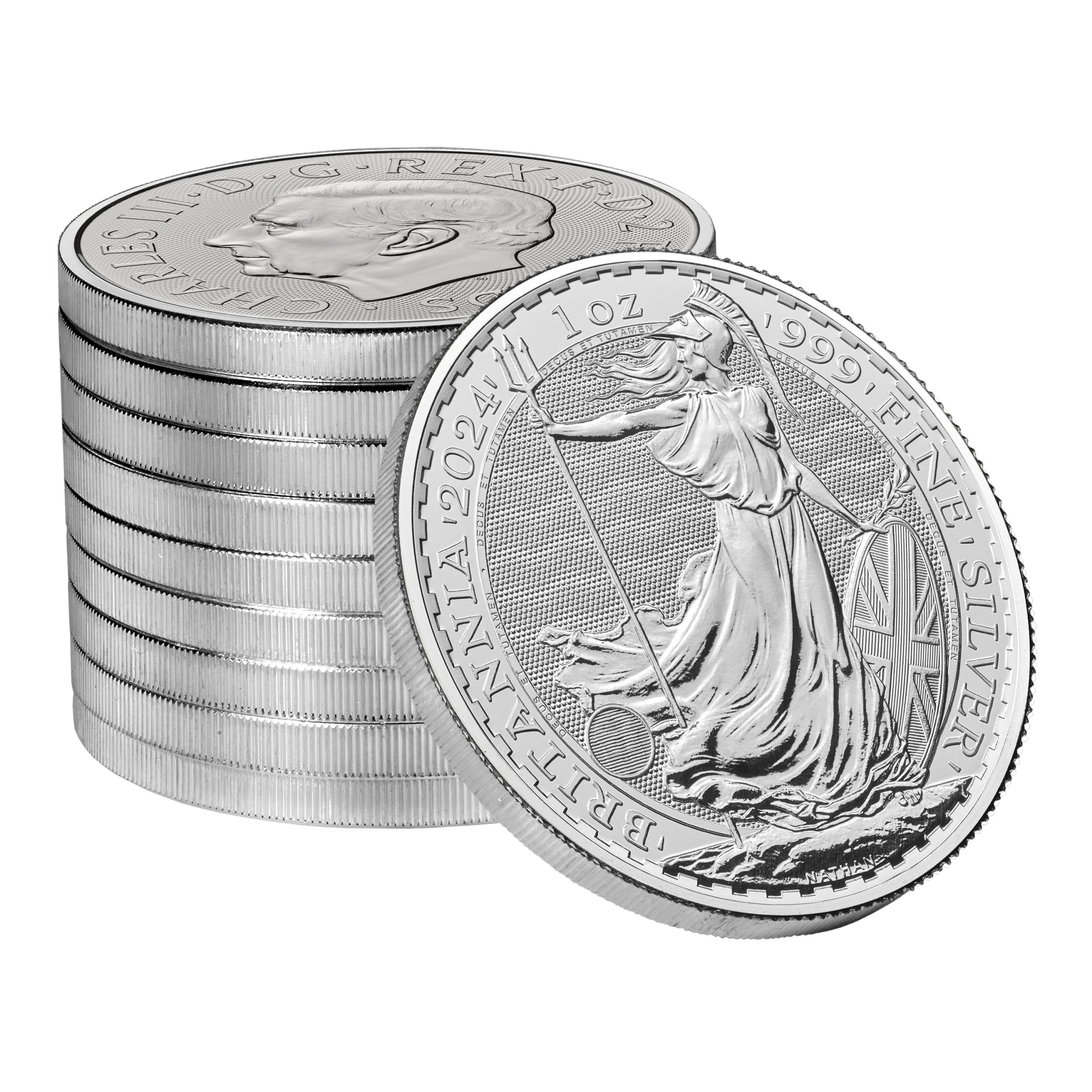
For UK investors, silver offers tangible benefits beyond basic portfolio diversification. Its accessibility, tax advantages, and liquidity in the British market make silver especially appealing.
Unlike gold, silver is attainable even for investors with limited capital. The affordability of silver coins and smaller bars opens the door to physical precious metals. Tax exemptions on capital gains for certain silver products provide further incentives.
Silver also shines with its easy tradability through online brokers, banks, and UK exchanges. Investors benefit from quick access to liquidity when needed.
In times of economic uncertainty like today, silver’s unique advantages make it a strategic asset for British investors seeking diversification, inflation hedging, and an alternative store of value.
Silver is a more affordable precious metal investment compared to gold. With silver trading at around £18 per troy ounce at the time of writing, investors can get started with smaller amounts of capital. This contrasts with gold, which trades around £1,560 per troy ounce—putting it out of reach for many.
By opting for silver coins or small silver bullion bars, UK investors can buy manageable quantities matched to their budgets. While gold bullion is sold in bars starting from around £300 for a tiny 5g weight, silver can be purchased in 100g increments which cost around £125 each. This allows you to accumulate physical precious metals without prohibitive upfront costs.
The ease of buying and selling an asset without causing major price swings is called liquidity. Silver stands out for its high liquidity, allowing vast amounts to change hands rapidly at stable prices. This fluid trading echoes silver’s broad appeal as an investment and industrial metal worldwide.
One key upside of silver’s liquidity is the quick access it provides to capital. Investors can swiftly convert holdings to cash, making silver attractive for flexibility. This matters during volatile times when liquid assets offer financial security. Moreover, effortless trading lets investors capitalise on short-term price moves in bullish conditions for potential profits.
Silver ETFs like Aberdeen Standard Physical Silver Shares ETF further heighten silver’s liquidity. These funds merge tangible metals with easy stock trading. Investors gain the stability of physical silver but with fluid ETF trading on major exchanges. This combo ensures those seeking secure silver can do so without sacrificing liquidity.
For physical silver bullion, reputable dealers like Physical Gold are here in the UK, providing two-way markets and ensuring buoyant liquidity. Compared to smaller markets like collectable coins, physical silver investment coins and bars can be liquidated relatively quickly into cash when needed.
Managing Director
Silver has historically been more volatile in price than gold. Its greater price fluctuations mean patient investors can sometimes reap very large returns. In times of economic crisis or high inflation, silver often rises much faster percentage-wise than gold.
Based on the data from Capital, silver has had a good year so far. After falling below $19 per troy ounce to trade below $18 in September 2022. However, the silver prices started the year 2023 at $24 and have stayed at a similar level since.
As much as you should consider the past and present of the investment, you should also look at the silver forecast for the upcoming year. That could help you to make better-informed decisions and build a stronger portfolio.
Some physical silver investments qualify for tax advantages in the UK, namely UK silver coins with a face value.. Popular one-ounce silver coins like Silver Britannias and Silver Maples are exempt from UK capital gains tax when sold at a profit.
When it comes to VAT, silver is subjected to the standard rate of 20%. However, there are still some ways to get silver without paying VAT.
The problem is that you wouldn’t be able to take physical possession of your investment . Instead, you’d need to store it in a bonded warehouse.
Download Our FREE Ultimate Insiders Guide
Silver investments depend heavily on real-world supply and demand dynamics, technological advancements, inflationary pressures, and geopolitical risks.
Analysing the key economic factors that impact silver paints a favourable picture of its future performance.
From increasing industrial and investment demand against constrained supply to silver’s status as a crisis and inflation hedge, the economic fundamentals back a bullish view.
Understanding these core factors will allow you to make educated forecasts about silver’s investment outlook.
Unlike gold, silver has extensive industrial applications, which now account for over 50% of total demand. With the accelerating global adoption of electronics, solar panels, electric vehicles, 5G, and other technologies, silver demand is forecasted to rise sharply in the coming decade.
However, years of underinvestment in new mines has left supply constrained. Therefore, according to metal experts and analysts, this dramatic shift in the supply-demand curve for white metal will ultimately result in sky-high prices.
Investors who are currently buying silver can expect to make a windfall gain in a few years.
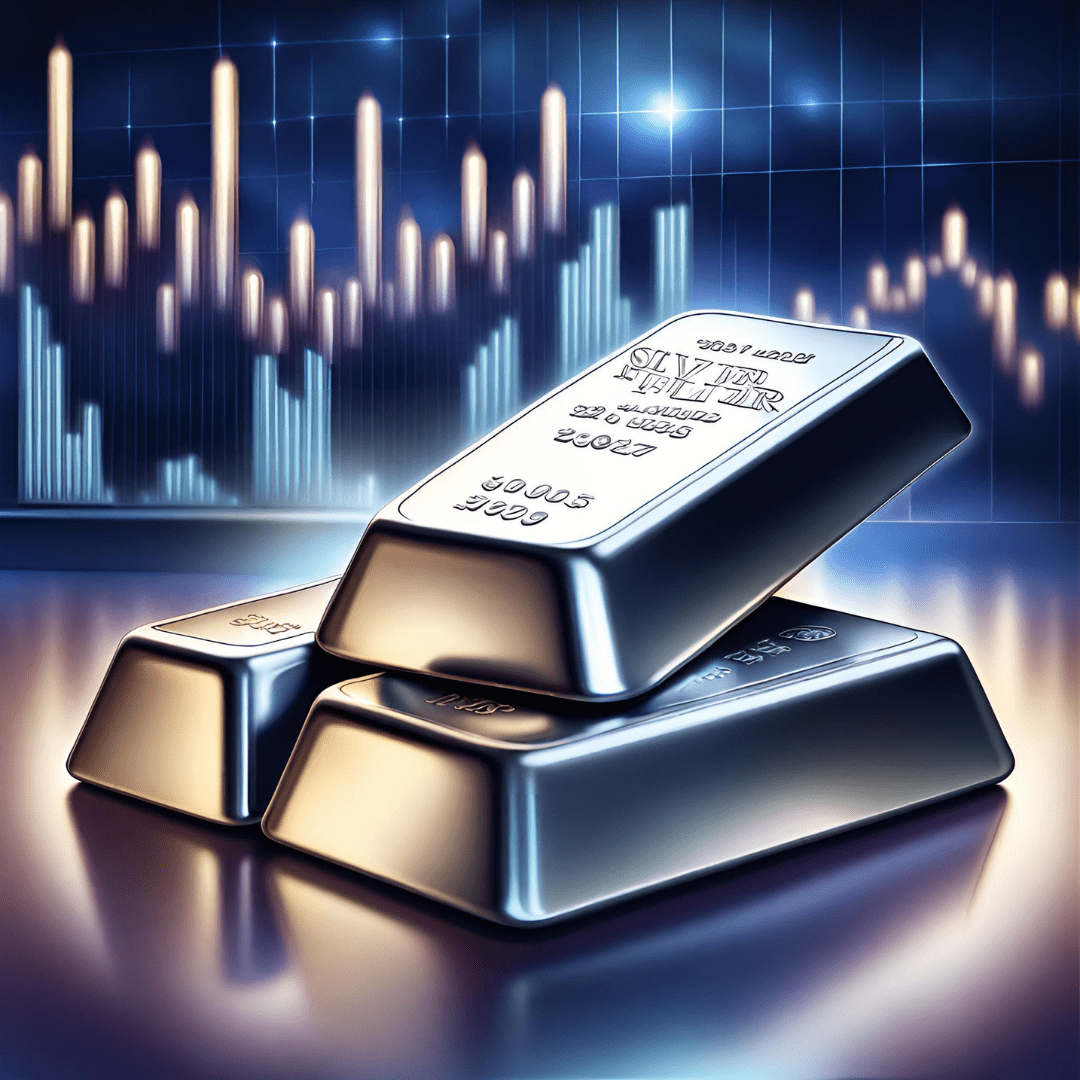
Silver has a centuries-long track record as an inflation hedge and protection against currency debasement.
With major central banks like the Fed and Bank of England ramping up money printing policies in response to high debt levels, inflationary risks make silver an appealing, safe haven asset.
Rising industrial commodity prices also tend to lift silver, making it a potent hedge during inflationary periods.
Silver’s unique physical properties, including unparalleled electrical conductivity and antibacterial qualities, have made it indispensable in electronics, medical applications, solar panels, 5G infrastructure, electric vehicles, and other cutting-edge technologies.
Expanding industrial use of new high-tech devices and clean energy is driving a robust secular increase in silver demand. No other commodity directly leverages high-tech megatrends like silver.
As a global commodity, silver prices move in reaction to geopolitical developments. Crises like wars, pandemics, or supply chain disruptions can rapidly increase demand for silver as a safe haven asset and hedging vehicle.
Given the high geopolitical instability looking forward, this represents another tailwind for silver. Market volatility induced by global tensions tends to lift precious metals prices as investors seek safe havens.
A strategic investor allocates across diverse asset classes that move independently rather than putting all eggs in one basket. In this regard, adding silver can significantly diversify an investment portfolio.
Silver tends to march to the beat of its own drummer, driven by unique supply and demand factors disconnected from stocks, bonds, and mainstream assets.
From providing an alternative store of value uncorrelated to paper assets to balancing out gold exposure, silver can reduce overall portfolio risk.
Blending it alongside conventional holdings allows participation in growth while also maintaining a stable anchor. Understanding silver’s particular diversification utility supports incorporating a modest strategic allocation.
Use our automated portfolio builder to get suggestions based on various investment objectives, including tax efficiency.
Silver provides portfolio diversification away from conventional assets that tend to move together, like stocks, bonds, and real estate.
As a physical commodity, silver acts as a tangible store of value disconnected from the financial system. Its unique properties mean silver prices often move independently from other mainstream investments.
This diversification can protect investors during events like stock market crashes, economic crises, or currency devaluations when most assets decline in tandem.
Holding a modest 5-10% allocation in physical silver or silver mining shares can provide outsized diversification benefits.
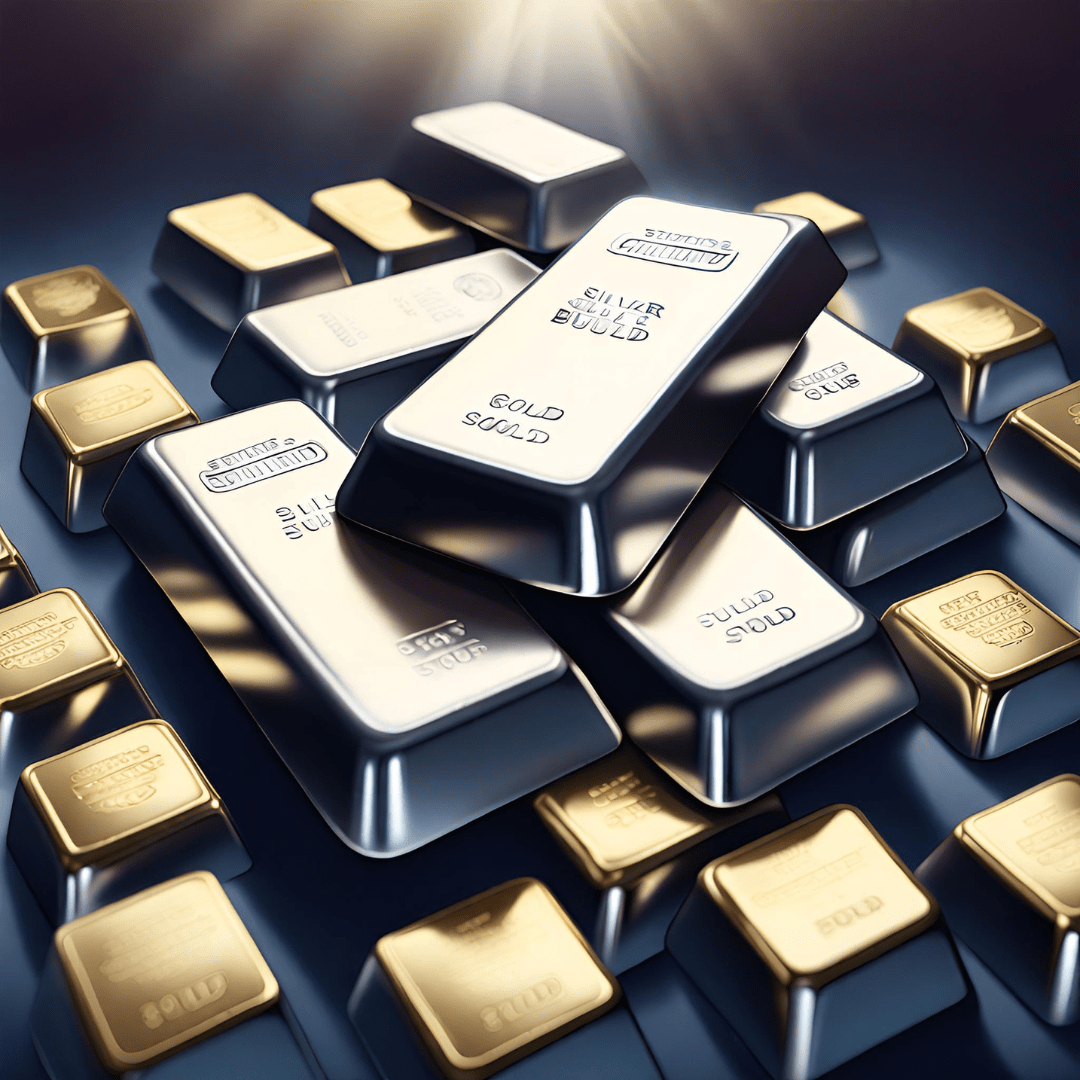
Silver further diversifies precious metals holdings within a portfolio. Comparing silver to gold, the yellow metal exhibits steadier, more gradual price moves. On the other hand, silver is considerably more volatile, with the potential for larger percentage swings in both directions. Investors can fine-tune their mix of gold versus silver based on risk tolerance.
One metric for determining the optimal ratio is the gold-to-silver ratio. This tracks how many ounces of silver are required to purchase one ounce of gold at any given time.
When the ratio falls substantially below its long-term average, it often signals silver is undervalued and poised to outperform. Savvy investors rotate a portion of gold holdings into silver to take advantage.
Portfolio theory shows that investors increase long-term risk-adjusted returns by holding assets with low correlation to traditional holdings like stocks and bonds.
As a physical commodity and an alternative store of value, silver has near zero correlation to paper assets. This means it can stabilise overall portfolio volatility.
Silver also indirectly manages risks like inflation, currency debasement, and systemic crises, which can rapidly erode purchasing power.
Blending silver allocations alongside stocks, real estate, and other conventional assets allows participation in growth while also maintaining an emergency store of value as protection.
Silver has undergone major multi-year price cycles throughout modern times, and its story is just as interesting as the history of gold [link to the gold history article]. It rose sharply in the late 1970s, culminating in an enormous spike during the Hunt brothers squeeze, where silver hit record highs of over $50 per ounce. After crashing back to single digits, it slowly rebuilt through the early 2000s, spiking to nearly $50 again in 2011.
Recently, silver rose from under $18 in October 2022 to over $26 by April 2023. These large swings demonstrate silver’s potential for dramatic gains during specific periods.
Silver has produced superior long-term returns measured across 50 years of worldwide economic growth and instability. But what’s to come in the future? Experts predict that the silver’s compounded annual gains will increase by 3% in the period between 2022 and 2026.
Looking specifically at the UK, silver has rewarded British investors who bought during dips and sold nearer highs. Those who purchased silver in 2001 as prices bottomed under £2 per ounce were able to sell for over £12 per ounce in 2011. That six-fold gain trounced the returns from the UK stock market over the same decade. Patient investing based on silver’s historical cycles can pay off enormously.
In summary, silver warrants consideration from UK investors seeking to diversify and strengthen their portfolios. As a physical asset with inherent value, silver provides an alternative store of wealth uncorrelated to paper assets. It serves as an inflation and crisis hedge while also offering the potential for portfolio-enhancing returns during certain periods. The unique benefits and tax advantages of silver in the UK market make it particularly appealing.
In today’s uncertain economic environment, silver belongs in every UK investor’s portfolio. Even a modest 5-10% allocation to physical silver or silver mining stocks can provide outsized diversification benefits and risk management. Silver’s role as real money with thousands of years of history gives it enduring value that can stabilise overall investment returns over the long term.
For UK investors, the time is right to make silver a permanent part of your asset allocation. Consider adding physical silver coins or bullion as well as silver mining equities to hedge inflation and balance your holdings. Your future self will thank you for investing in this timeless tangible asset.
The investment team at Physical Gold consists of highly qualified silver experts. Call us now on (020) 7060 9992, and we can offer you free advice on how and when to buy silver. You can also reach out to the team via our website and discuss your silver requirements. We can help you make the right decisions to build a strong silver portfolio.
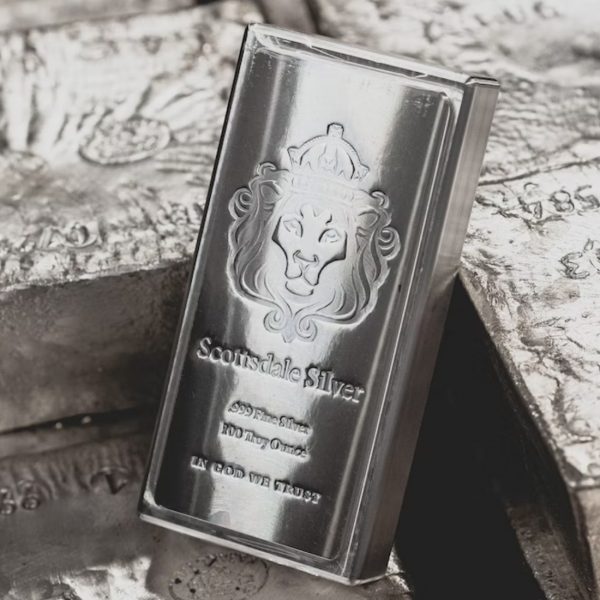
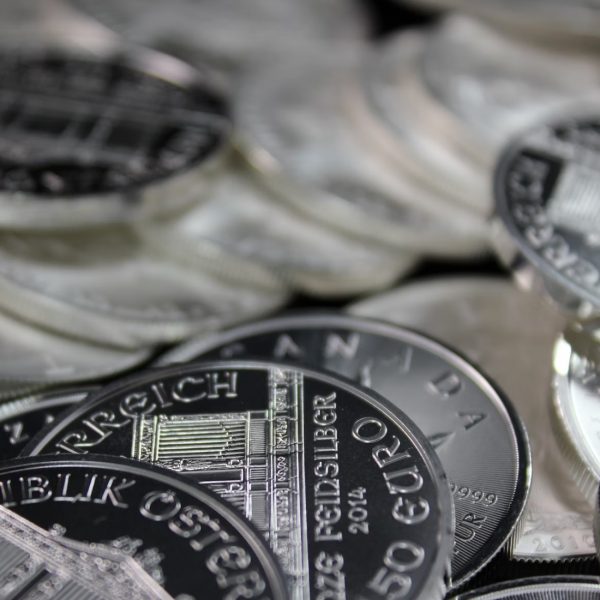
Navigating the silver market can be overwhelming for both experienced and beginning investors. Here are some of the most common questions we’ve heard from investors like you:
Yes, silver can be an attractive investment for UK investors seeking portfolio diversification, inflation hedging, and exposure to an alternative store of value. The tax benefits in the UK, like the exemption from Capital Gains Tax on certain silver coins, add to its appeal. Allocating around 5-10% of a portfolio to physical silver or silver mining stocks can provide good diversification. However, you should always adjust the percentage to your circumstances or ask a financial advisor for guidance.
Silver offers UK investors a way to diversify away from conventional assets like stocks and bonds that often move together. As a physical commodity with intrinsic value, silver acts as an inflation hedge and crisis hedge independent of the financial system. This unique role makes it strategically important for managing risk and hedging against losses in a UK investor’s overall portfolio.
In moderation, yes. Silver can play a valuable role in a diversified UK investor’s portfolio as a way to hedge inflation, balance risk, and gain exposure to an uncorrelated asset. Silver also carries unique tax advantages in the UK market. Maintaining a 5-10% allocation to physical silver or silver mining stocks can provide good risk-adjusted returns over time and balance out other holdings.
Pros are portfolio diversification, inflation hedging ability, tax advantages in the UK, higher potential returns than gold, and protection during market downturns. Cons are that silver is more volatile than gold, has higher trading costs for physical bullion, can underperform during certain periods, and requires secure storage if owned physically. Overall, it carries pros and cons like any asset class.
Live Gold Spot Price in Sterling. Gold is one of the densest of all metals. It is a good conductor of heat and electricity. It is also soft and the most malleable and ductile of the elements; an ounce (31.1 grams; gold is weighed in troy ounces) can be beaten out to 187 square feet (about 17 square metres) in extremely thin sheets called gold leaf.
Live Silver Spot Price in Sterling. Silver (Ag), chemical element, a white lustrous metal valued for its decorative beauty and electrical conductivity. Silver is located in Group 11 (Ib) and Period 5 of the periodic table, between copper (Period 4) and gold (Period 6), and its physical and chemical properties are intermediate between those two metals.